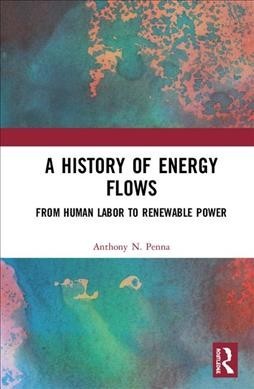| A History of Energy Flows: From Human Labor to Renewable Power Contributor(s): Penna, Anthony N. (Author) |
|
 |
ISBN: 1138588296 ISBN-13: 9781138588295 Publisher: Routledge OUR PRICE: $161.50 Product Type: Hardcover - Other Formats Published: September 2019 |
| Additional Information |
| BISAC Categories: - Nature | Natural Resources - Political Science | Public Policy - Environmental Policy - Science | Energy |
| Dewey: 333.790 |
| LCCN: 2019036597 |
| Series: Routledge Studies in Energy Transitions |
| Physical Information: 0.8" H x 6.3" W x 9.4" (2.60 lbs) 286 pages |
| Themes: - Topical - Ecology |
| Descriptions, Reviews, Etc. |
| Publisher Description: This book presents a global and historical perspective of energy flows during the last millennium. The search for sustainable energy is a key issue dominating today's energy regime. This book details the historical evolution of energy, following the overlapping and slow flowing transitions from one regime to another. In doing so it seeks to provide insight into future energy transitions and the means of utilizing sustainable energy sources to reduce humanity's fossil fuel footprint. The book begins with an examination of the earliest and most basic forms of energy use, namely, that of humans metabolizing food in order to work, with the first transition following the domestication and breeding of horses and other animals. The book also examines energy sources key to development during the industrialization and mechanization, such as wood and coal, as well as more recent sources, such as crude oil and nuclear energy. The book then assesses energy flows that are at the forefront of sustainability, by examining green sources, such as solar, wind power and hydropower. While it is easy to see energy flows in terms of "revolutions," transitions have taken centuries to evolve, and transitions are never fully global, as, for example, wood remains the primary fuel source for cooking in much of the developing world. This book not only demonstrates the longevity of energy transitions but also discusses the possibility for reducing transition times when technological developments provide inexpensive and safe energy sources that can reduce the dependency on fossil fuels. This book will be of great interest to students and scholars of energy transitions, sustainable energy and environmental and energy history. |